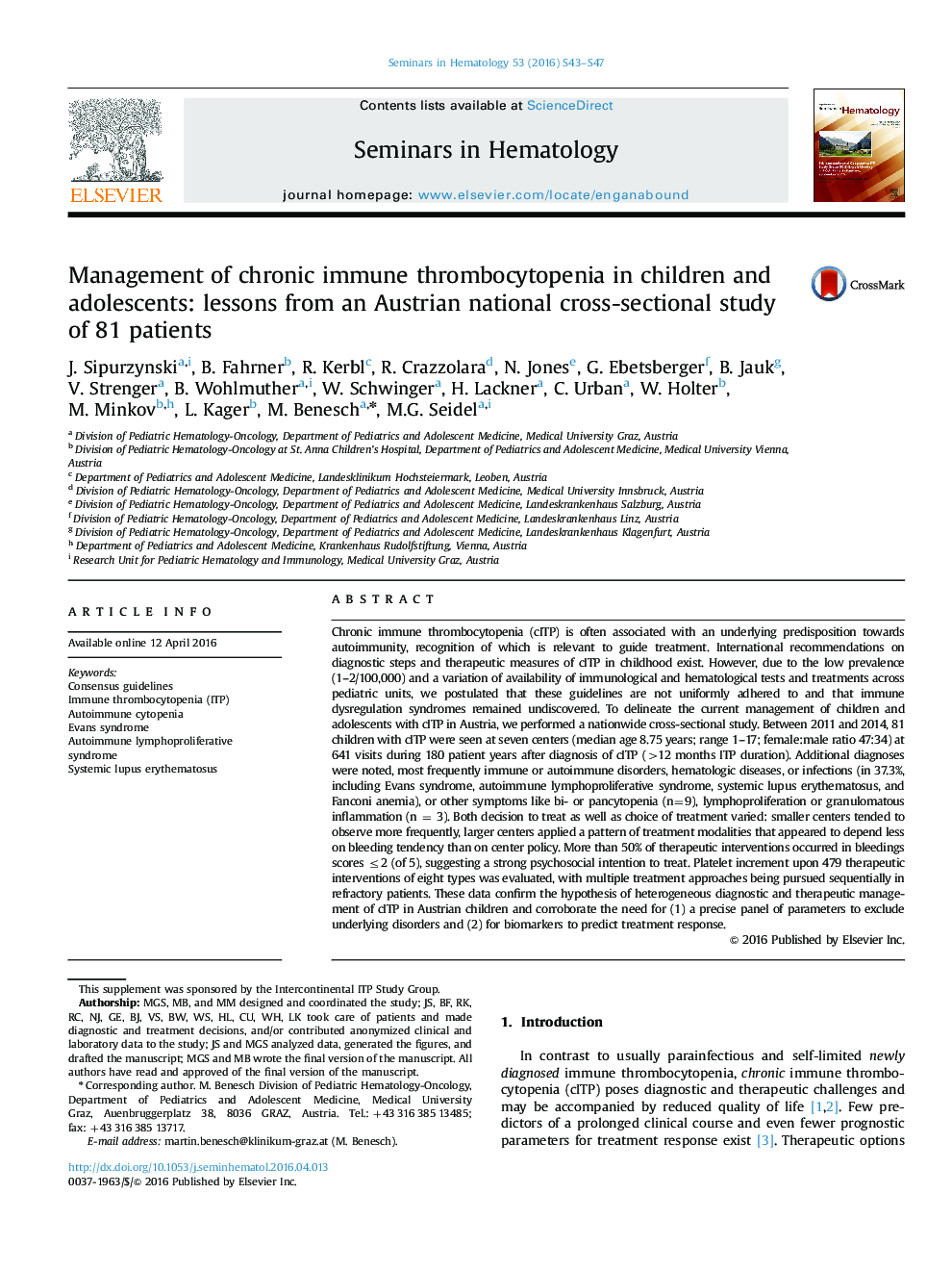| Article ID | Journal | Published Year | Pages | File Type |
|---|---|---|---|---|
| 3333425 | Seminars in Hematology | 2016 | 5 Pages |
Chronic immune thrombocytopenia (cITP) is often associated with an underlying predisposition towards autoimmunity, recognition of which is relevant to guide treatment. International recommendations on diagnostic steps and therapeutic measures of cITP in childhood exist. However, due to the low prevalence (1–2/100,000) and a variation of availability of immunological and hematological tests and treatments across pediatric units, we postulated that these guidelines are not uniformly adhered to and that immune dysregulation syndromes remained undiscovered. To delineate the current management of children and adolescents with cITP in Austria, we performed a nationwide cross-sectional study. Between 2011 and 2014, 81 children with cITP were seen at seven centers (median age 8.75 years; range 1–17; female:male ratio 47:34) at 641 visits during 180 patient years after diagnosis of cITP (>12 months ITP duration). Additional diagnoses were noted, most frequently immune or autoimmune disorders, hematologic diseases, or infections (in 37.3%, including Evans syndrome, autoimmune lymphoproliferative syndrome, systemic lupus erythematosus, and Fanconi anemia), or other symptoms like bi- or pancytopenia (n=9), lymphoproliferation or granulomatous inflammation (n = 3). Both decision to treat as well as choice of treatment varied: smaller centers tended to observe more frequently, larger centers applied a pattern of treatment modalities that appeared to depend less on bleeding tendency than on center policy. More than 50% of therapeutic interventions occurred in bleedings scores ≤2 (of 5), suggesting a strong psychosocial intention to treat. Platelet increment upon 479 therapeutic interventions of eight types was evaluated, with multiple treatment approaches being pursued sequentially in refractory patients. These data confirm the hypothesis of heterogeneous diagnostic and therapeutic management of cITP in Austrian children and corroborate the need for (1) a precise panel of parameters to exclude underlying disorders and (2) for biomarkers to predict treatment response.
